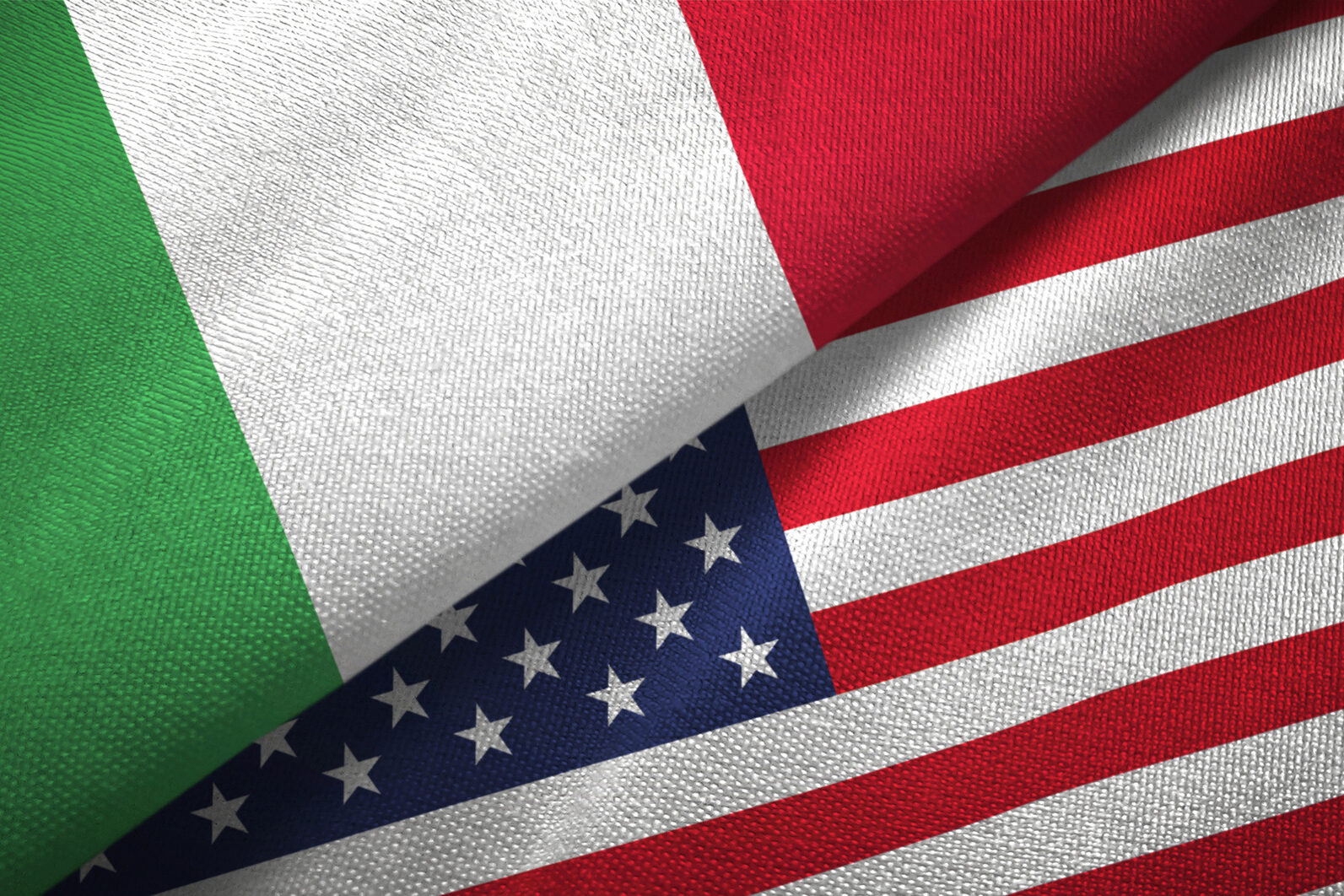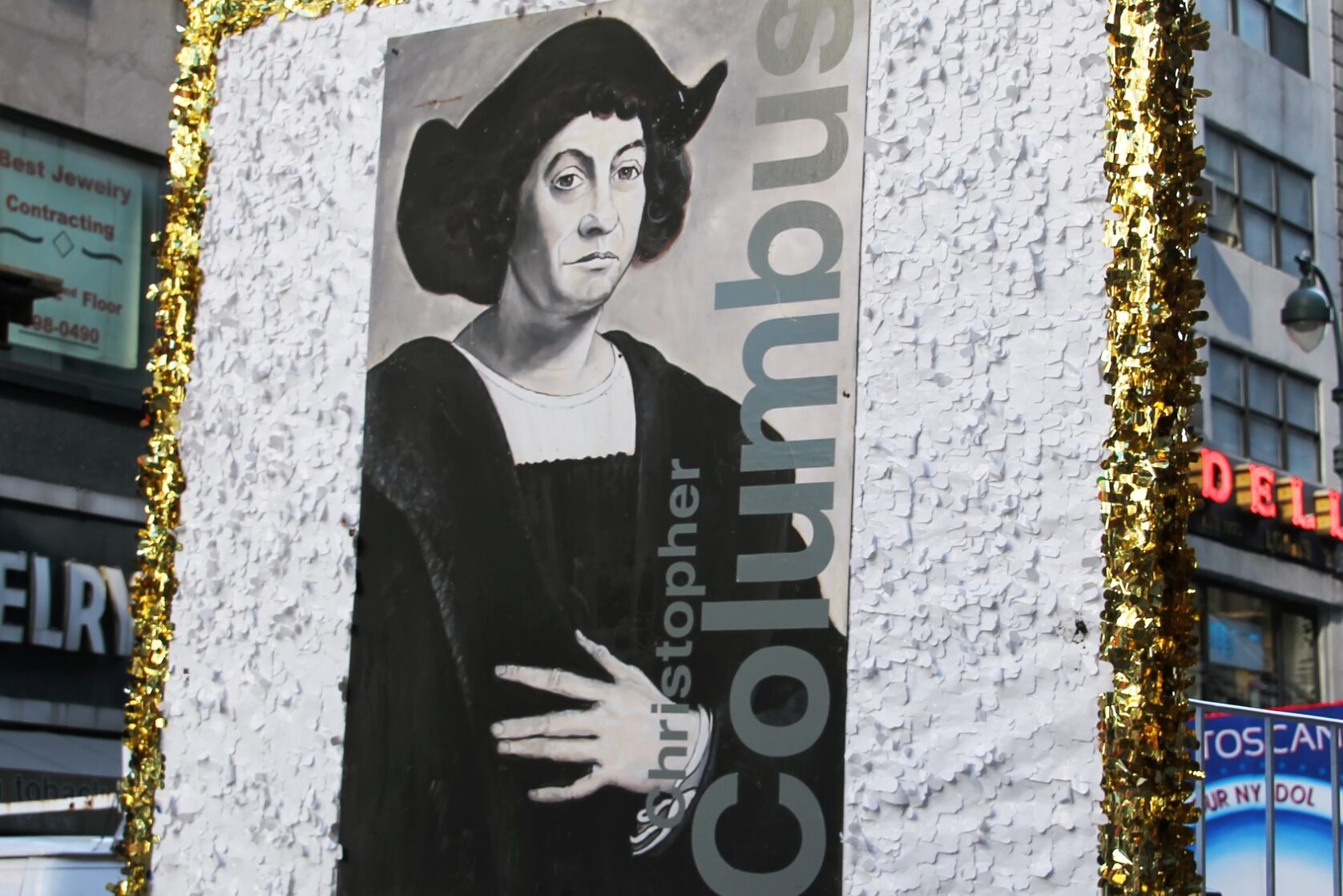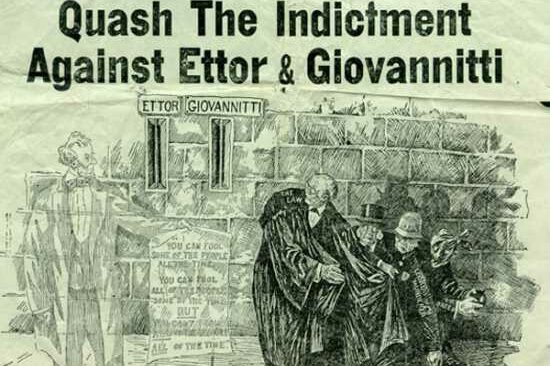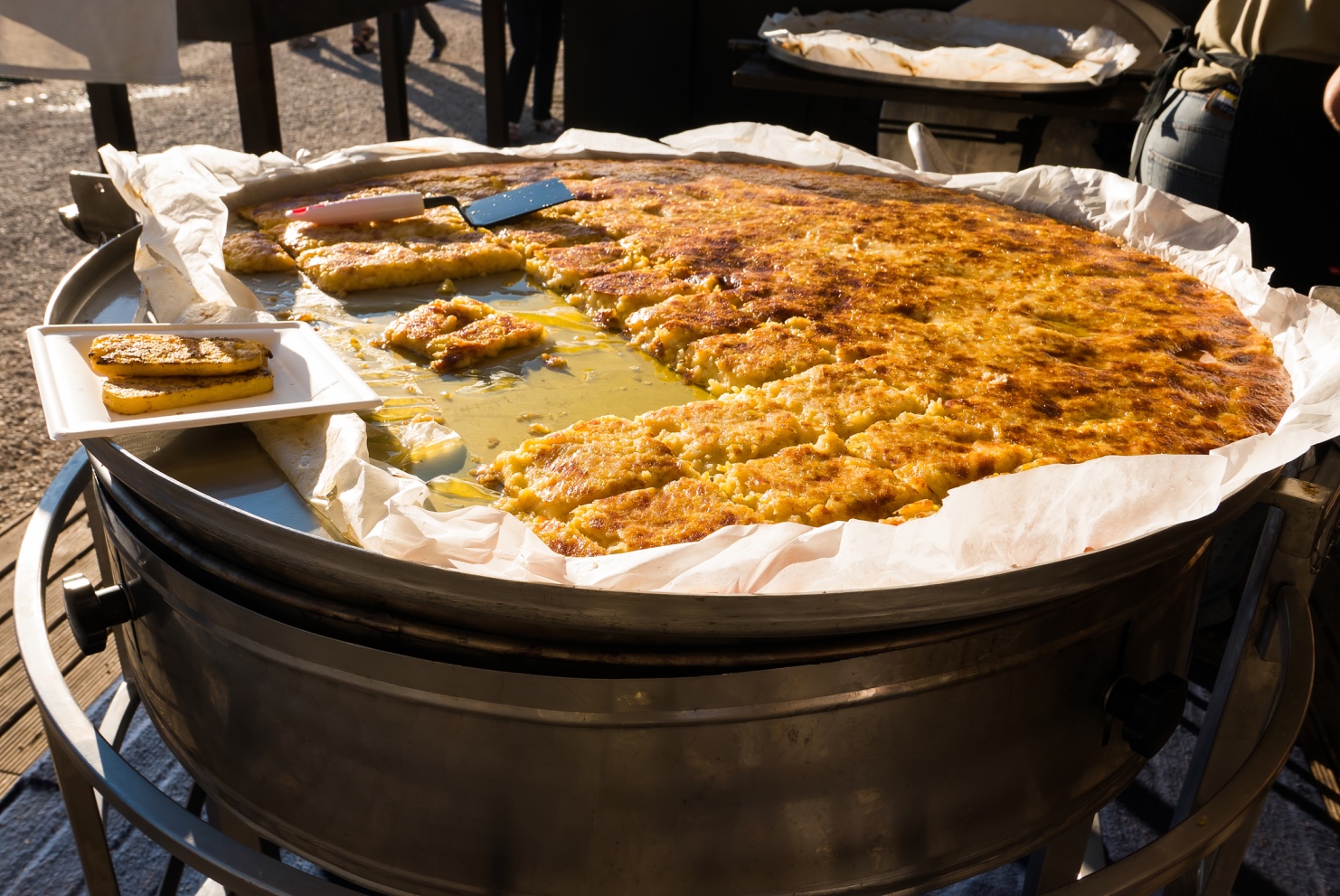Dear Readers,
L’Italo-Americano began publishing in 1908 and 105 years later is the only weekly Italian American “contenda” still standing in the state of California, western United States and Canada. L’Italo-Americano is the only newspaper that celebrates our heritage and publishes on a weekly basis.
L’Italo-Americano is the last jewel left in our weekly Italian American Treasure chest and I urge everyone to support our “giornale” with renewals, gift subscriptions and advertising now, because if we do not guard this Italian American community treasure, the pleasure and our treasure will soon become history.
This holiday season, put subscriptions to L’Italo-Americano at the top of your Gift List.
***
For Readers with “Studenti” in the family studying far from home, the digital version of L’Italo-Americano makes an ideal gift. Sit down now and go through your gift list. Give all the young people on your list a digital subscription to L’Italo-Americano for only $24 a year (or $40 for two years). If you tech-savvy skills are shabby, just call the L’Italo-Americano Newspaper office telephone ) and someone will help you make as many digital Italian gift connections as you desire. For those on your gift list like me, who prefer the print version of L’Italo-Americano, a 1 year subscription will cost you $49 (or $80 for 2 years).
If your household has both computer literate and computer illiterati residing under the same roof, only $60 a year can make everybody happy, for it includes both the print edition with the convenience of home delivery and instant access to L’Italo-Americano via the digital edition. And, for just $100 you can have both formats print and digital every week published for “due anni”, that’s 2 years of 2 format for only $100. Visit now!
***
Andrew M. Canepa, historian, editor of the Piemontese “Boletin”, longtime (since 1980) volunteer curator of the Italian American Collection at the San Francisco Public Library, made it very clear in a lecture and exhibit on Italian Journalism in San Francisco and the Bay Area I once attended that our Italian-American press has become an endangered species and we must nurture and support our ethnic press now or “domani” will be too late.
***
Andrew M. Canepa introduced the exhibit on local Italian-language newspapers and periodicals from their inception in the 1850’s to their demise in late 1979 (when L’Italo-Americano’s then publishers, the Scalabrini, picked up the pieces of L’Eco d’Italia), and in 1980 with the capable and dedicated assistance of the late (1997) Eve Sodo, who served since 1949 with an early paper L’Italia, then as managing editor of San Francisco based L’Eco d’Italia continued to run a modest little office in Fugazi Hall after its merger with L’Italo-Americano as Northern California representative and journalist.
In 1980 L’Italo-Americano became the only Italian-American newspaper in the West and then editor Mario Trecco said “I can see that a move concerning ‘L’Eco d’Italia’ was inevitable in order to save it from a slow extinction. Mr. Pierino Mori, former owner, from Toronto did an impossible job in keeping it alive for fourteen years, and when the moment came for a decision he turned to the Scalabrini Fathers, specialist in the field of migration and service and in service to Italians and Italian-Americans. The fact that they already had a newspaper operating in California made the choice the best possible”.
In the following years the Scalabrini Fathers decided to focus on service to the newer non-Italian migrants and sold their Italo-American newspapers in Chicago, Vancouver B.C., and Los Angeles, California. Several self-styled Italo-American leaders talked about saving our ethnic press but only Cav. Robert Barbera, our current publisher stepped forward.
***
Italian journalism took first halting steps in San Francisco in the mid-1850’s, when short-lived Italian-language pages were inserted in the Spanish paper La Cronica and the French paper Le Phare. In the early decades of the local Italian colony, there was an active cooperation among the Latin nationalities of the city.
***
The first Italian-language paper in San Francisco was the biweekly L’Eco della Patria founded in 1859. It was the first such publication west of New York (L’Eco d’Italia, dating from 1849). It was published and edited by the well-born torinese pioneer Federico Biesta. The enterprise, supported by the Italian consul was staunchly Monarchist in Italian politics.
A fellow pioneer journalist, Carlo Dondero, considered Biesta’s paper the organ of the conservative wealthy merchants within the community (led by Nicola Larco and Domingo Ghirardelli) and of the (local ortolani) vegetable growers. In American politics, the paper was Democrat and anti-Unionist.
***
In 1860, Angelo Mangini, a Mazzinian exile from Genoa and the opposite of his father-in-law, Domingo Ghirardelli, in politics founded a rival weekly, La Cronaca Italiana. It was not until 1868 that the more liberal faction of San Francisco Italians had a viable rival to L’Eco della Patria, with the founding of the long-lived La Voce del Popolo, a biweekly.
It is interesting to note the unprovincial nature of the new organ. Of the founding nucleus of eleven, three of them were Ticinesi, from the Italian-speaking canton of Switzerland.
The first editor was Giorgio Norton, a Florentine of British descent.
Within a short time, the founding shareholders sold the paper to their partners, G.B. Cevasco and Carlo Dondero, both Ligurians, who had learned the printing trade at New York’s L’Eco d’Italia. Dondero remained editor of La Voce del Popolo until 1885. The newspaper prospered to the detriment of its rivals. In 1872, Federico Biesta capitulated and sold L’Eco della Patria to La Voce del Popolo. In 1880, another weekly, La Scintilla Italiana, published by the travel agent John F. Fugazi, folded and was also gobbled up. Fugazi’s paper had been strongly anticlerical, anti-Chinese and anti-Irish, despite its motto “Giustizia (Justice), progresso e libertà.
***
In 1886, a group called itself the Lega dei Mille founded a biweekly newspaper, L’Italia which quickly became the archrival of La Voce del Popolo.
***
Cesare Crespi, a Milanese, arrived from New York to edit the young paper. According to a post-earthquake tout in a commemorative issue of the paper, Lega dei Mille was a group of high-minded gentlemen who formed the Società Editrice Italiana, purchased two failing papers and fused them into L’Italia. By early 1889, L’Italia was published on a daily basis. La Voce del Popolo followed suit touting a daily circulation of 10,000 copies…at the time there were only 15,495 Italians in the entire State of California.
The basic dividing line between the two Italian dailies continued to be Monarchy vs. Republic. Changes in ownership of the two papers brought to the fore new journalists. L’Italia purchased by ex-senator Egisto Palmieri, installed as editor-in-chief Pio Morbio co-founder of the Il Corriere della Sera of Milan.
***
In 1895, Palmieri offered co-editorship of the paper to a recently arrived duo, Ettore Patrizi and Giovanni Almagia, who in turn bought the paper in 1897. That same year, the aging G.B. Cevasco sold “La Voce del Popolo” to Carlo Pedrettiand his sons. Pedretti had been one of the real “Mille” with Garibaldi in Sicily, and in 1862 had founded the Società Democratica Operaia of his native Chiavenna. He would be managing editor of La Voce del Popolo until his return to Italy in 1905.
Ettore Patrizi bought out his partner in 1905, and until his death in 1946 was the controlling shareholder of L’Italia and its editor in chief. Patrizi held a degree in mechanical engineering from the Polytechnic Univ. of Milan.
While a student, he had frequented heady leftist circles and was a friend of Ernesto Teodoro Moneta, winner of the Nobel peace prize, and of the Socialists Enrico Ferri and Filippo Turati. He was also engaged to the poet Ada Negri.
Patrizi’s political trajectory was eventually left to right but for two decades L’Italia was decidedly a friend of labor, supporting the organizing of the city’s bootblacks (lustrascarpe), mostly from Verbicaro (in the Calabria province of Cosenza), strikes by Italian miners in 1903, lumber workers in 1909, and cannery workers in 1917.
In 1909, L’Italia opposed restrictions against Japanese immigrants, arguing that such measures might eventually be imposed against Italians, reminiscent of what actually happened during WWII. The paper also strenuously defended Italian Americans against instances of discrimination and defamation. During the Libyan War, Patrizi’s paper became stridently nationalistic, and warmly embraced Mussolini’s ascent to power in 1922.
In 1920, he hired as managing editor, Paolo Pallavicini who is credited with organizing the San Francisco section of the Italian Fascist Party (the Fascio Umberto Nobile), active from 1924 to 1929.
***
Ettore Patrizi made no bones about himself as a convinced Fascist, as far as Italy was concerned.
After Pearl Harbor, his situation became tenuous. In May 1942, before the California Un-American Activities Committee, Carmelo Zito accused him of being an agent of the OVRA, the Fascist secret police, and of being on the Duce’s payroll,both accusations baseless canards (Ettore Patrizi was subsequently banished from the area of the Western Defense Command, and returned from his exile in Reno, Nevada only after the Italian armistice of September 1943 and died in 1946).
Patrizi’s accuser, Carmelo Zito, had emigrated to the US in 1923, born in the province of Reggio Calabria and forced to leave because of persecution suffered by his family at the hands of the Fascists due to his father’s Socialist leaning. In 1935, Zito, holder of a law degree from the University of Messina and veteran of the Italian-American leftist press in New York, took over as editor of Il Corriere del Popolo founded in 1911, as a Socialist biweekly by the sons of Carlo Pedretti (Mameli and Pierino), in San Francisco, California. The arrival of Carmelo Zito led to an escalation of antifascist polemics on the part of the paper. There had been a number of Socialist, Anarchist and antiFascist periodicals in the past but Il Corriere del Popolo, until its demise in 1967, was the longest-lasting among them.
***
La Voce del Popolo, became more conservative over time. Guglielmo Torchia (managing editor from 1920 to 1943) a native of Verbicaro, Calabria, was ubiquitous on the local Italian scene since his arrival in 1908: on the staff of L’Italia, as secretary of the Dante Alighieri Society, as a travel agent, as a founder and first secretary of the Italian Federation of California, as co-founder of the San Francisco Merola Opera Company.
The conservative evolution of La Voce del Popolo was certainly due to the fact that Ettore Patrizi bought a controlling interest in the paper. In 1943 “la vecchia signora” of local Italian-language journalism was absorbed by L’Italia (by that time, La Voce del Popolo had a daily circulation of only 4,000).
***
Ettore Patrizi, editor of L’Italia, banished from the Bay Area due false wartime accusations lived in Reno, Nevada for the duration. In Patrizi’s absence, Torchia became wartime editor of L’Italia and by 1943 was being praised by an Office of War Information chief for his Anti-Fascist editorials. L’Italia was the last Italian-language daily newspaper on the Pacific Coast. Renato Marrazzini, who succeeded Patrizi as publisher and editor in chief, liquidated the paper in September 1965.
***
In October 1966, Pierino Mori, owner of L’Eco d’Italia in Vancouver, BC, launched a weekly L’Eco d’Italia in San Francisco; urged to do so by the then pastor of Sts. Peter and Paul Church, Fr. Joseph Costanzo. The venture lasted until the beginning of 1980, when Mori sold the paper to L’Italo-Americano of Los Angeles, founded in 1908 and the only weekly Italian-American newspaper now in all of Western U.S.A. and Canada.
***































